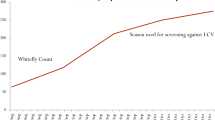Abstract
Late blight is one of the major diseases in tomato cultivated both in the greenhouse and the field. In this work, we determined the resistance levels of all progeny lines (F1 to F3) and a new variety (NV) F1 to the late blight disease fungus to evaluate these hybrid lines as potential sources of resistance. The experiments were carried out in greenhouse conditions in a completely randomized block design with three replications. Fifteen out of 204 F2 plants of cross A (AV107-4 × L3708) and 13 out of 203 F2 plants of cross B (Campari × 917 × L3708) were found to be resistant to late blight in combined data from greenhouse trials. In addition, 5 resistant F3 lines derived from each of the two crosses A and B were selected for further investigation. By screening the NV F1 hybrids obtained by pollination of the F3 lines by 3 male-sterile cultivars (Wonung-1, 2, and 3), two stable resistant hybrids, Wonung-2 × A120 and Wonung-3 × B23, were finally produced. An examination of the qualitative characters in the NV F1 hybrids indicated improved fruit weight and quality. Taken together, our screening results indicate that both of these hybrids are good sources of resistance and have high-value horticultural characters, which can be used for tomato breeding programs.
Similar content being viewed by others

Literature Cited
Becktell, M.C., M.L. Daughtre, and W.E. Fry. 2005. Epidemiology and management of petunia and tomato late blight in the greenhouse. Plant Dis. 89:1000–1008.
Fry, W.E. and S.B. Goodwin. 1997. Resurgence of Irish potato famine fungus. Bioscience 47:363–371.
Hakiza, J.J. 1999. The importance of resistance to late blight in potato breeding in Africa, p. 47–48. In: Proceedings of the global initiative on late blight conference, March 16–19, 1999, Quito, Ecuador. (Abstr.)
Kim, B.S. 2012. Evaluation of tomato genetic sources (Solanum spp.) for resistance breeding against late blight. Res. Plant Dis. 18:35–39.
Kim, M.J. and M.A. Mutschler. 2005. Transfer to processing tomato and characterization of late blight resistance derived from Solanum pimpinellifolium L. L3708. J. Amer. Soc. Hort. Sci. 130:877–884.
Ko, W.H. 1994. An alternative possible origin of the A2 mating type of Phytophthora infestans outside Mexico. Phytopathology 84:1224–1227.
Kumer, S., B.S. Vyakaranhal, Y.B. Palled, P.R. Dharmatti, and A.M. Patil. 1998. Studies on crossing ratio and pollination time in tomato hybrid seed production (Lycopersicon esculentum Mill.). Agric. Sci. 21:30–34.
Möller, K., M. Dilger, J. Habermeyer, V. Zinkernagel, W.G. Flier, and H. Hausladen. 2009. Population studies on Phytophthora infestans on potatoes and tomatoes in southern Germany. Eur. J. Plant Pathol. 124:659–672.
Moreau, P., P. Thoquet, O. Jocelyne, L. Henri, and G. Nigel. 1998. Genetic mapping of Ph-2, a single locus controlling partial resistance to Phytophthora infestans in tomato. Mol. Plant-Microbe Interact. 4:259–269.
Mukalazi, J., E. Adipala, T. Sengooba, J.J. Hakiza, M. Olanya, and H.M. Kidanemariam. 2001. Metalaxyl resistance, mating type and pathogenicity of Phytophthora infestans in Uganda. Crop Prot. 20:379–388.
Parlevliet, J.E. 1979. Components of resistance that reduce the rate of epidemic development. Annu. Rev. Phytopathol. 17:203–222.
Picó, B., A. Sifres, M.J. Diez, and F. Nuez. 2000. Searching for new resistances to Tomato yellow leaf curl virus within a highly variable wild Lycopersicon genetic pool. Acta Physiol. Planta 22:344–350.
Saleem, M.Y., K.P. Akhtar, M. Asghar, Q. Iqbal, and A.R. Khan. 2011. Genetic control of late blight, yield and some yield related traits in tomato (Lycopersicon esculentum Mill.). Pak. J. Bot. 43:2601–2605.
Shattock, R. 2002. Phytophthora infestans: populations, pathogenicity and phenylamides. Pest Manag. Sci. 58:944–950.
Zhu, G.N., F.X. Huang, L.X. Feng, B.X. Qin, Y.H. Yang, Y.H. Chen, and X.H. Lu. 2008. Sensitivities of Phytophthora infestans to metalaxyl, cymoxanil, and dimethomorph. Agric. Sci. China. 7: 831–840.
Author information
Authors and Affiliations
Corresponding author
Rights and permissions
About this article
Cite this article
Park, D.H., Zhang, Y. & Kim, B.S. Improvement of resistance to late blight in hybrid tomato. Hortic. Environ. Biotechnol. 55, 120–124 (2014). https://doi.org/10.1007/s13580-014-0046-1
Received:
Revised:
Accepted:
Published:
Issue Date:
DOI: https://doi.org/10.1007/s13580-014-0046-1



